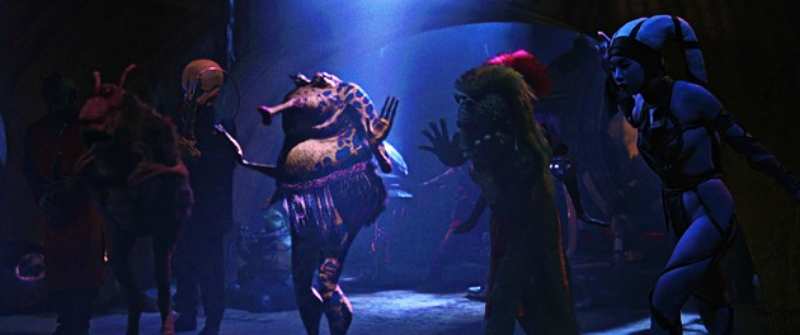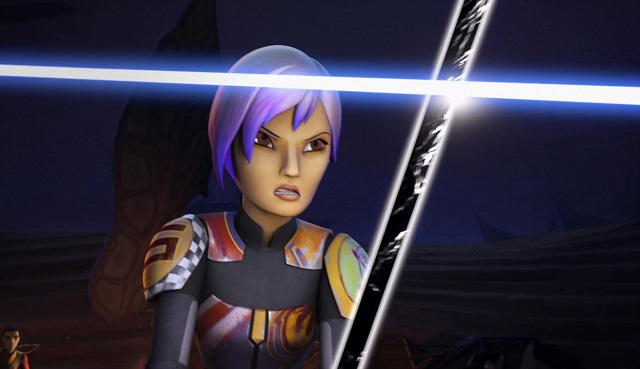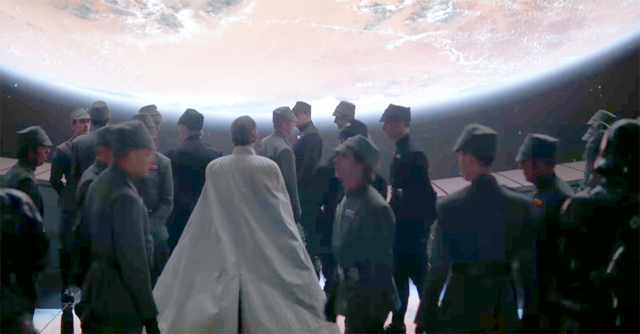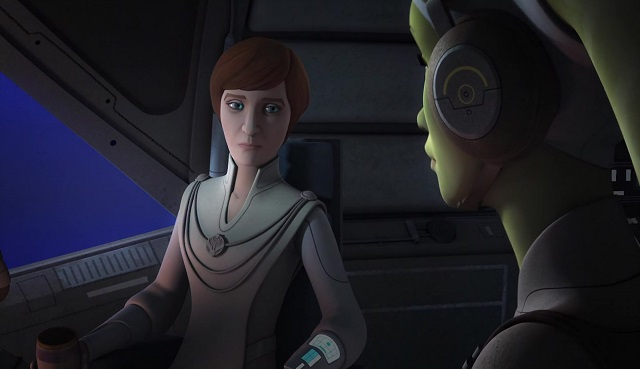
Ben: Rebels has been seeding appearances from different portions of the budding Alliance since the first season, when Bail Organa showed up as a secret observer of the Ghost crew and their increasingly public actions. But the third season has made a clear and definite effort to bring more of those pieces into play, until this week’s episode sought to unite them on screen at long last, showing one of those beginning moments that we always knew had happened but have never actually seen before now.
The keystone to this event is Mon Mothma. We get to see her formally resign her seat in the Imperial Senate and call for any and all fellow rebels to unite under a single banner. While we don’t see the formal signing of an organizational article stating as such, and Mon is far from the first rebel or even the first senator to turn against the Emperor, she is the most high-profile defector from decadence that we have seen up to this point. Major note is made of her courage to stand up against the Empire, fighting in the senate instead of with blasters since before the end of the Clone Wars, and her finally stepping down from that post is a major turning point in the escalation of the war.
Mon Mothma has been showing up a lot in Star Wars lately. She has major supporting roles in a couple of books (Bloodline, Empire’s End), a brief but central role in Rogue One, and now she pops up in Rebels. In the old Expanded Universe, she used to be little more than a name drop, listed as one of the founders of the Alliance but never given all that much to really do aside from administrate the New Republic and dole out advice to the far-more-central Leia Organa. Now, she’s just as prominent before the events of Return of the Jedi as she is after it, showing that she did more to help establish the rebellion than just sign some papers. Read More
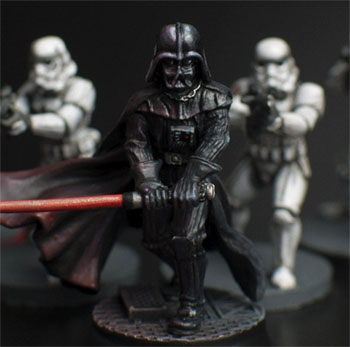 Hello and welcome again to The Force Does Not Throw Dice, the very irregular ETE feature devoted to tabletop roleplaying games in the galaxy far, far away. It’s been a long time since my last piece but, after seeing the warm reception that my Star Wars RPG tweets usually get, I’m going to try to change things around and turn this into a more regular feature. So expect more RPG rants in the near future!
Hello and welcome again to The Force Does Not Throw Dice, the very irregular ETE feature devoted to tabletop roleplaying games in the galaxy far, far away. It’s been a long time since my last piece but, after seeing the warm reception that my Star Wars RPG tweets usually get, I’m going to try to change things around and turn this into a more regular feature. So expect more RPG rants in the near future!